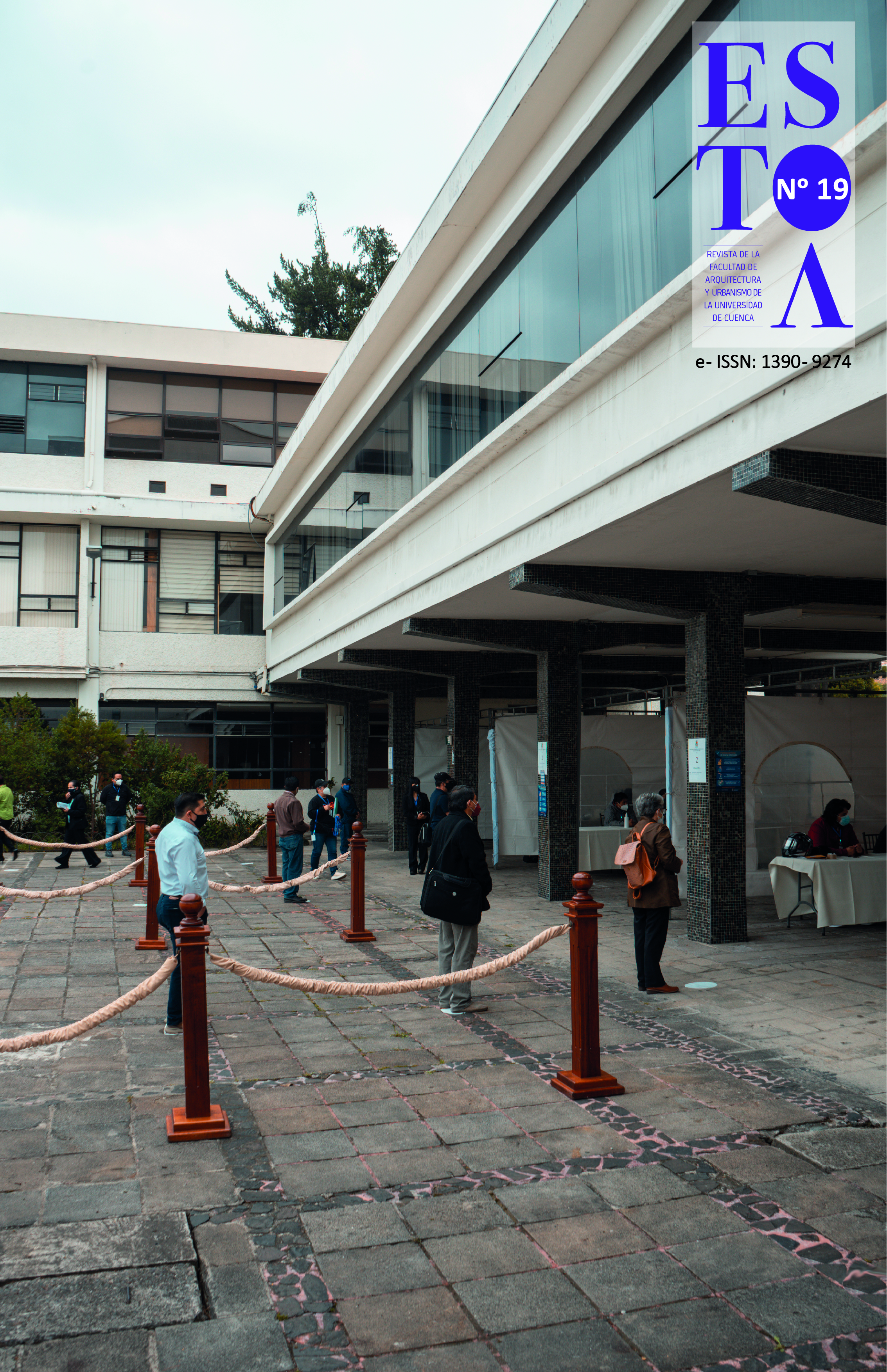Inclusive Architecture: a neurocognitive approach
DOI:
https://doi.org/10.18537/est.v010.n019.a09Keywords:
nclusive architecture, neurocognitive sciences, wayfinding, wayshowing.Abstract
Inclusive architecture has hardly been considered under the substrate of neurocognitive sciences. Generally, this approach to architectural design is generated under functional guidelines that do not consider deeper levels such as neurocognitive ones. It is for this reason that the objective of this work is to analyze the implications of cognitive sciences in architectural design in order to propose design guidelines that contribute to strengthening inclusion in spaces through intuitive codes. To this end, it relies on an inductive method, which begins with an analytical review oriented to inclusive architecture, to contrast with the proposals from the neurocognitive sciences, accessibility, the principles of wayfinding and wayshowing and their semiotic foundations.
It is concluded that, in the design of architectural spaces, it is necessary to consider spatial learning and thinking through patterns, since as seen, it is not the same as visual learning and thinking.
Downloads
References
Arbib, M. (2003). The Handbook of Brain Theory and Neural Networks. The MIT Press.
Brusilovsky, B. (2015). Accesibilidad Cognitiva Modelo para diseñar espacios accesibles. Ciudad Accesible de Granada.
Cámara de Diputados del H. Congreso de la Unión. (2018). Ley General para la Inclusión de las Personas con Discapacidad. Diario Oficial de la Federación.
http://www.diputados.gob.mx/LeyesBiblio/pdf/LGIPD_120718.pdf
De Paolis, R. y Guerini, S. (2015). Wayfinding Accessible Design. En C. Gambardella (Ed.), Heritage and Technology (pp. 1411-1420). La Scuola di Pitagora editrice.
Foltz, M. A. (1998). Designing Navigable Information Spaces [Tesis de Maestría, Massachusetts Institute of Technology]. http://rationale.csail.mit.edu/pubs/mfoltz/mfoltz-thesis/thesis.pdf
García Moreno, D. (2012). Diseño de Sistemas de Orientación Espacial: Wayfinding. Laboratorio Wayfinding.
Golfarb, E. (2016). Memory guided attention: Independent contributions of the hippocampus and striatum. Neuron.
Golledge, R. (1999). Wayfinding Behavior, Cognitive Mapping and Other Spatial Processes. The Johns Hopkins University Press.
Green Building Council España. (2020). Salud, espacios, personas. HAUS. https://gbce.es/documentos/Salud-Espacios-Personas.pdf
Han, S., y Ma, Y. (2015). A culture-behavior-brain loop model of human development. Trends in Cognitive Sciences, 19(11), 666-676.
Jakobson, R. (1981). Linguística, poética, tiempo. Crítica.
Jiménez-Balado, J. (2019). Las 'células de lugar', algo así como nuestro GPS cerebral. Psicología y mente. https://psicologiaymente.com/neurociencias/celulas-lugar-gps-cerebral
Li, R. y Klippel, A. (2016). Wayfinding behaviors in complex buildings: The impact of environmental legibility and familiarity. Environment and Behavior, 48(3), 482-510.
Lynch, K. (2015). La imagen de la ciudad. Gustavo Gili.
Mollerup, P. (2013). Wayshowing>Wayfinding Basic and Interactive. BIS Publisher.
ONU. (2008). Convención sobre los derechos de las personas con discapacidad. ONU.
Sanford J.A. (2016). Design for All Users. En R. Hunter, L. Anderson y B. Belza (Eds.), Community Wayfinding: Pathways to Understanding (pp. 81-101). Springer
Schwering, A., Krukar, J., Li, R., Joy, V. y Fuest, S. (2017). Wayfinding Through Orientation. Spatial Cognition & Computation, 17, 273-303. https://www.tandfonline.com/doi/full/10.1080/13875868.2017.1322597
Solano Meneses, E. y Quiroga Llano, C. (2016). Complejidad y complicabilidad en Arquitectura. Revista Ontosemiótica, 3 (8), 49-67.
Sussman, A. y Hollander, J. B. (2014). Cognitive Architecture: Designing for how we Respond to the Built Environment. Routledge.
Taillade, M., N'Kaoua, B. y Sauzéon, H. (2016). Age-related differences and cognitive correlates of self-reported and direct navigation performance: The effect of real and virtual test conditions manipulation. Frontiers in Psychology, 6, 2034.
Weisman, J. (1981). Evaluating architectural legibility: way-finding in the built environment. Environment and Behavior 13 (2), 189-204.
Weisberg, S. M., y Newcombe, N. S. (2016). How do (some) people make a cognitive map? Routes, places, and working memory. Journal of Experimental Psychology: Learning, Memory, and Cognition, 42(5), 768.
Downloads
Published
Versions
- 2021-06-09 (2)
- 2021-01-27 (1)
How to Cite
Issue
Section
License
The Journal declines any responsibility for possible conflicts derived from the authorship of the works that are published in it.
The University of Cuenca in Ecuador conserves the patrimonial rights (copyright) of the published works and will favor the reuse of the same ones, these can be: copy, use, diffuse, transmit and expose publicly.
Unless otherwise indicated, all contents of the electronic edition are distributed under a Creative Commons Attribution-NonCommercial-ShareAlike 4.0 International License.




